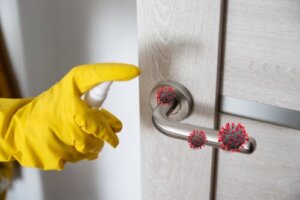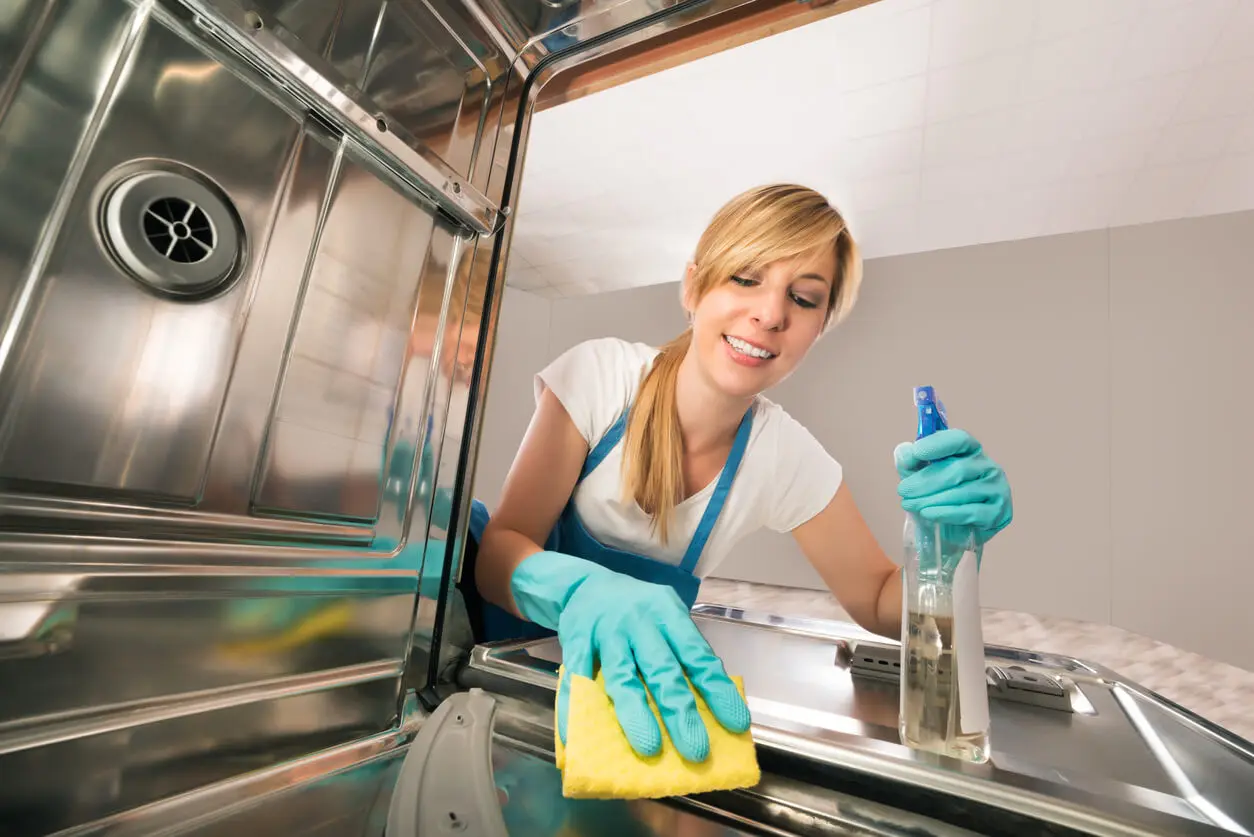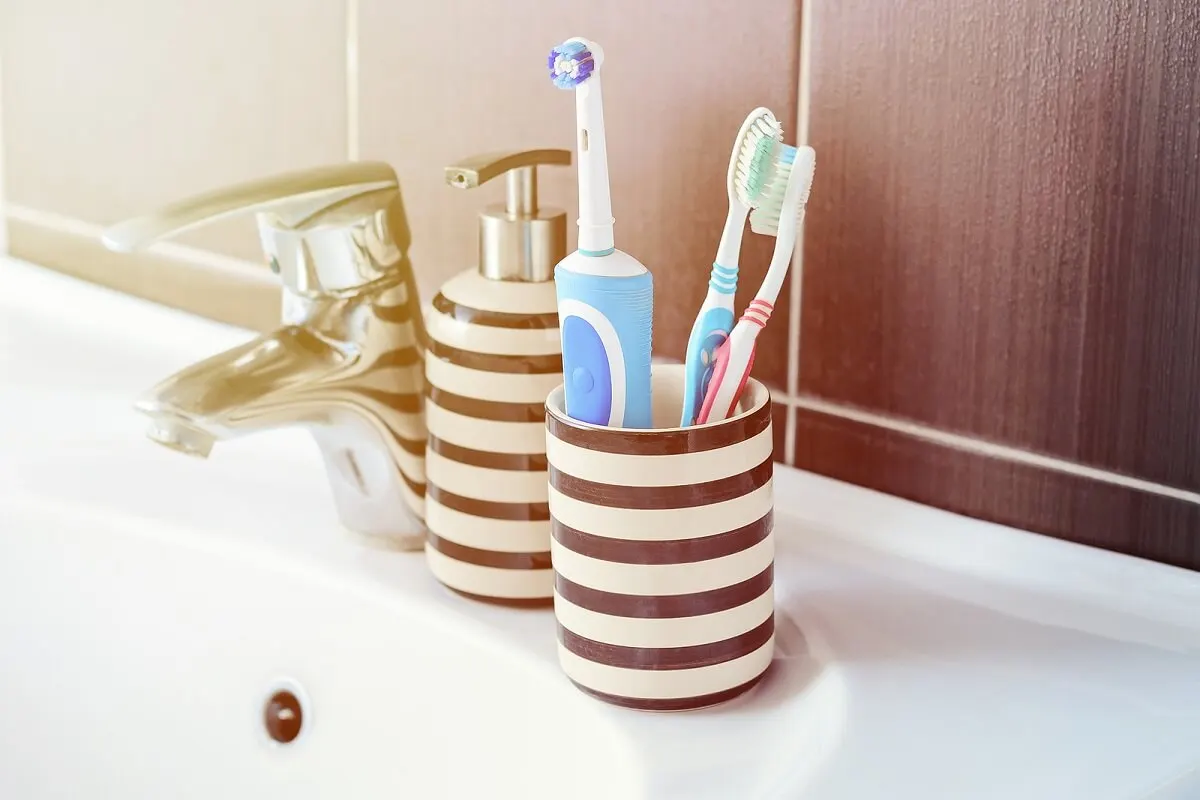The 7 Dirtiest Places in the House and How to Disinfect Them

Cleaning visible dirt is very easy. In fact, it’s what we do whenever we decide to clean up. The kitchen and bathroom are usually the rooms that get the dirtiest, although after cleaning them, they’re not always free of germs and bacteria. That’s why we’ve prepared a list of the dirtiest places in the house and some tips for disinfecting them.
When cleaning, it’s common to overlook certain spaces and objects that constitute a perfect place for the proliferation of fungi and bacteria that can be harmful to human health. Let’s take a look at what these places are – you’ll be surprised!
1. The dirtiest places in the house: The dishwasher
Let’s start with the kitchen, since it’s one of the dirtiest places in the house. Dishes, glasses, and cutlery come out of the dishwasher sparkling clean, but do you know what state the machine is in?
Some studies have shown that the dishwasher harbors bacteria that can affect our health by causing poisoning and skin infections. During the washing process, food residues are released and accumulate, and when the machine is washed the next time, these residues begin to circulate among the new utensils. And this happens again the next time the machine is run, too.
What can you do? Every now and then, you should remove the bottom grid and take out the filter and all the filters contained in the machine. Then, you should wash them with warm water and detergent and the help of a brush. Once you rinse them, let them dry.
To finish this cleaning, place a dishwasher-safe cup with white vinegar and start a program that uses hot water. The vinegar helps to loosen the grease residue.
You should clean your dishwasher thoroughly once a week.

2. Cloths and kitchen sponges
We should wash and replace sponges and cloths used in the kitchen more often than we tend to. This is because they’re elements in which pathogens proliferate very easily.
In addition to replacing them more frequently, we suggest that you wring them out well once they’ve been used. Finally, you can leave the cloths in water with bleach for a few hours to help disinfect them.
We think you may be interested in reading this, too: Eco Friendly Methods to Clean and Disinfect the Fridge
3. The dirtiest places in the house: The sink
Continuing with the kitchen environment, we come to the sink, a perfect place for the proliferation of microorganisms that can be harmful to our health. When the dishes accumulate with leftover food that’s not washed at the time, fungi and bacteria can multiply.
The main recommendation don’t leave dirty dishes and wash the sink every time you finish washing dishes. You know the saying: don’t put off until tomorrow what you can do today.
4. The oven
To finish with the kitchen, let’s talk about the oven. While it’s true that it operates at high temperatures that kill bacteria, it’s necessary to keep it clean for other reasons.
The leftover food will burn and give off an aroma that can ruin the next dish. Also, accumulated grease will produce a rather unpleasant odor – and that’s not to mention the appearance of the oven when too much dirt accumulates.
5. Dirtiest places in the house: The toilet
Now we’ll move on to the bathroom, a damp area par excellence and a focus of microorganisms. As you can imagine, the toilet tops the list of the elements that accumulate the most germs, precisely because it’s among the dirtiest places in the house.
According to a study, a toilet harbors about 50 bacteria every 2.5 cm. Although it’s true that we tend to clean it regularly, it’s important to remember the importance of keeping it clean.
The key is to clean it with a household disinfectant with a cloth exclusively for this purpose. The inside can be cleaned with the classic toilet brush, taking the nooks and crannies into account.
Like this article? You may also like to read: How to Clean the Beauty Blender or Blurring Sponge Without Damaging It
6. Toothbrushes and their container cups
There are many different microorganisms that are transferred from the mouth to the toothbrush. Then, when they’re in proximity to other family members’ toothbrushes, they can spread. These include staphylococci, coliform bacteria, and even fecal germs.
We’d like to focus on this last example. When toothbrushes are often in the same room as the toilet (since not everyone puts the toilet seat down before flushing), the contamination of toothbrushes is a cause for concern. When the toilet is emptied, the microparticles contained can spread through the environment and fall onto different surfaces, including toothbrushes.
To reduce the risks of this type of contamination, you can lower the toilet lid before flushing and protect the toothbrushes with a cover. Also, we suggest you disinfect the cups where these utensils are placed on a daily basis.

7. The dirtiest places in the house: Cell phones and computers
Believe it or not, there are thousands of bacteria present in technological devices, such as cell phones and computer keyboards. We handle both devices many hours a day and we don’t always do it with clean hands.
In the case of cell phones, we must recognize that, in many cases, we take them from the kitchen to the bathroom without any care, so fungi and bacteria soon reproduce and spread.
As for keyboards, some people eat food while using them, and the food debris that falls can lead to the grown of different germs. Also, by touching our nose and mouth, we’re helping to spread microorganisms.
The best way to clean the cell phone is to remove the cover that covers it and wipe it with a cloth with a disinfectant at least once a day. In the case of the keyboard, the best option is to vacuum it and then spray it with a disinfectant spray.
The list of the dirtiest places in the house seems endless
We hope you can apply some of these ideas to clean and disinfect the spaces and items that we all tend to forget in our daily cleaning. However, there are other places and objects that also need to be taken into account: doorknobs, faucets, and toys. We recommend you to have a sprayer with disinfectant liquid always at hand.
All cited sources were thoroughly reviewed by our team to ensure their quality, reliability, currency, and validity. The bibliography of this article was considered reliable and of academic or scientific accuracy.
- Gómez, D., Lavayén, S., Nario, F., Piquin, A., & Zotta, C. M. (2011). Detección de microorganismos potencialmente patógenos en hogares de Mar del Plata. Acta bioquímica clínica Latinoamericana, 45(3), 441-445.
- Zárate, N., Cowan, C., Román, C., & Lombardo, G. (2020). Contaminación bacteriana de esponja de lavado y bachas de cocina de cantinas de escuelas de asunción y gran asunción. Pediatría (Asunción), 47(2), 94-99.
- ESPINOSA, A., & SORIA, C. ESTUDIOS SOBRE LA CONTAMINACIÓN BACTERIANA EN AMBIENTES DOMÉSTICOS DE CINCUENTA HOGARES EN LA CIUDAD DE QUITO. DE LA PONTIFICIA UNIVERSIDAD CATÓLICA DEL ECUADOR, 59.
- Pérez Taco, O. P. (2017). Análisis microbiológico de los cepillos dentales en los estudiantes del primer semestre de la Carrera de Odontología de la Universidad Nacional de Chimborazo(Bachelor’s thesis, Universidad Nacional de Chimborazo, 2017).
- Hodelín, Y. H., de los Reyes García, Z. L., Cumbá, G. H., & Salmon, M. B. (2016). Riesgos sobre tiempo prolongado frente a un ordenador. Revista Información Científica, 95(1), 175-190.
- Yiyela Masó, M., Sesma, A. C., Pintado, S., Santolin, C., Luna, T. I., & Mangiaterra, S. M. (2020). Contaminación ambiental por microorganismos multirresistentes y el efecto de la limpieza y desinfección en una unidad de cuidados intensivos. Acta bioquímica clínica latinoamericana, 54(2), 145-150.
This text is provided for informational purposes only and does not replace consultation with a professional. If in doubt, consult your specialist.








